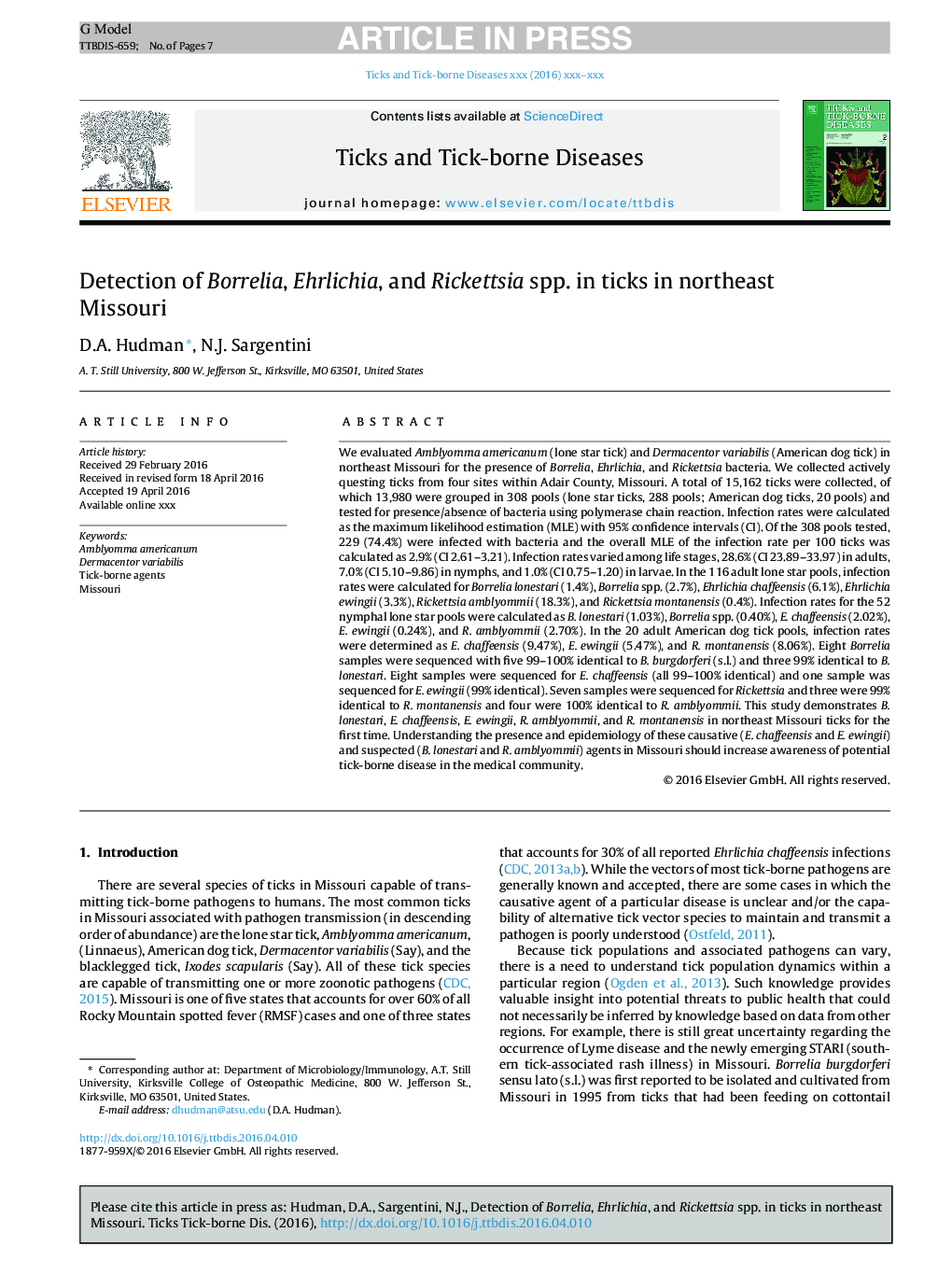| Article ID | Journal | Published Year | Pages | File Type |
|---|---|---|---|---|
| 5546410 | Ticks and Tick-borne Diseases | 2016 | 7 Pages |
Abstract
We evaluated Amblyomma americanum (lone star tick) and Dermacentor variabilis (American dog tick) in northeast Missouri for the presence of Borrelia, Ehrlichia, and Rickettsia bacteria. We collected actively questing ticks from four sites within Adair County, Missouri. A total of 15,162 ticks were collected, of which 13,980 were grouped in 308 pools (lone star ticks, 288 pools; American dog ticks, 20 pools) and tested for presence/absence of bacteria using polymerase chain reaction. Infection rates were calculated as the maximum likelihood estimation (MLE) with 95% confidence intervals (CI). Of the 308 pools tested, 229 (74.4%) were infected with bacteria and the overall MLE of the infection rate per 100 ticks was calculated as 2.9% (CI 2.61-3.21). Infection rates varied among life stages, 28.6% (CI 23.89-33.97) in adults, 7.0% (CI 5.10-9.86) in nymphs, and 1.0% (CI 0.75-1.20) in larvae. In the 116 adult lone star pools, infection rates were calculated for Borrelia lonestari (1.4%), Borrelia spp. (2.7%), Ehrlichia chaffeensis (6.1%), Ehrlichia ewingii (3.3%), Rickettsia amblyommii (18.3%), and Rickettsia montanensis (0.4%). Infection rates for the 52 nymphal lone star pools were calculated as B. lonestari (1.03%), Borrelia spp. (0.40%), E. chaffeensis (2.02%), E. ewingii (0.24%), and R. amblyommii (2.70%). In the 20 adult American dog tick pools, infection rates were determined as E. chaffeensis (9.47%), E. ewingii (5.47%), and R. montanensis (8.06%). Eight Borrelia samples were sequenced with five 99-100% identical to B. burgdorferi (s.l.) and three 99% identical to B. lonestari. Eight samples were sequenced for E. chaffeensis (all 99-100% identical) and one sample was sequenced for E. ewingii (99% identical). Seven samples were sequenced for Rickettsia and three were 99% identical to R. montanensis and four were 100% identical to R. amblyommii. This study demonstrates B. lonestari, E. chaffeensis, E. ewingii, R. amblyommii, and R. montanensis in northeast Missouri ticks for the first time. Understanding the presence and epidemiology of these causative (E. chaffeensis and E. ewingii) and suspected (B. lonestari and R. amblyommii) agents in Missouri should increase awareness of potential tick-borne disease in the medical community.
Related Topics
Life Sciences
Agricultural and Biological Sciences
Animal Science and Zoology
Authors
D.A. Hudman, N.J. Sargentini,
